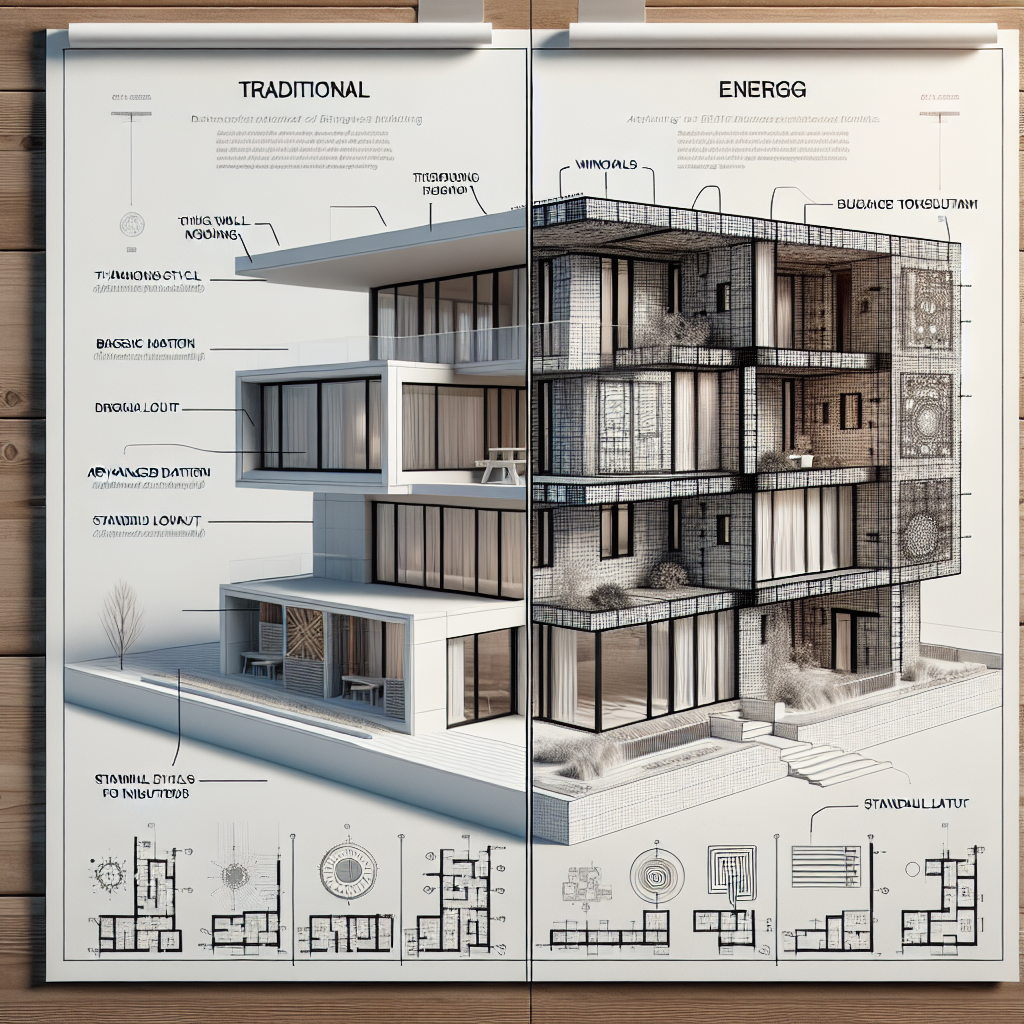As technology continues to advance at a rapid pace, the use of artificial intelligence (AI) in various industries has become increasingly prevalent. One area where AI is making a significant impact is in building design, specifically in energy modeling. AI-driven energy modeling is revolutionizing the way architects and engineers design buildings by providing more accurate and efficient ways to optimize energy consumption and improve sustainability. In this article, we will explore the benefits of AI-driven energy modeling in building design and how it is shaping the future of architecture and engineering.
Benefits of AI-Driven Energy Modeling:
1. Improved Accuracy: One of the key benefits of AI-driven energy modeling is its ability to provide more accurate predictions of a building’s energy consumption. Traditional energy modeling methods rely on assumptions and simplifications that can lead to inaccuracies in the final results. AI, on the other hand, can analyze vast amounts of data and identify patterns and trends that may not be apparent to human designers. This leads to more precise energy models that can help architects and engineers make better decisions when designing a building.
2. Faster Design Process: AI-driven energy modeling can significantly speed up the design process by automating complex calculations and simulations. This allows designers to explore a wider range of design options in a shorter amount of time, ultimately leading to more efficient and sustainable building designs. By using AI to generate energy models, designers can quickly evaluate the impact of different design choices on energy consumption and make informed decisions that optimize energy efficiency.
3. Cost Savings: Implementing AI-driven energy modeling in building design can result in cost savings for both designers and building owners. By accurately predicting energy consumption, designers can optimize the building’s energy systems and reduce the need for costly retrofits or upgrades after construction. Additionally, AI can help identify opportunities for energy savings, such as optimizing lighting and HVAC systems, which can lead to lower operating costs for building owners over the lifetime of the building.
4. Enhanced Sustainability: AI-driven energy modeling plays a crucial role in improving the sustainability of buildings by maximizing energy efficiency and reducing carbon emissions. By using AI to optimize building design, architects and engineers can create more environmentally friendly buildings that consume less energy and have a smaller carbon footprint. This is particularly important as the demand for sustainable buildings continues to grow, and governments worldwide are implementing stricter energy efficiency regulations.
5. Adaptive Design: AI-driven energy modeling allows designers to create buildings that can adapt to changing environmental conditions and user behavior. By continuously analyzing data on energy consumption and building performance, AI can suggest adjustments to the building’s systems to optimize energy efficiency in real-time. This adaptive design approach ensures that buildings are always operating at peak efficiency, regardless of external factors such as weather or occupancy levels.
FAQs:
Q: How does AI-driven energy modeling differ from traditional energy modeling methods?
A: Traditional energy modeling methods rely on manual input and assumptions to predict a building’s energy consumption. AI-driven energy modeling, on the other hand, uses machine learning algorithms to analyze vast amounts of data and identify patterns and trends that can improve the accuracy of energy models. This results in more precise predictions and faster design processes.
Q: Is AI-driven energy modeling suitable for all types of buildings?
A: AI-driven energy modeling can be applied to a wide range of building types, from residential homes to commercial office buildings. However, the effectiveness of AI in energy modeling may vary depending on the complexity of the building design and the availability of data. In general, AI-driven energy modeling is most beneficial for large and complex buildings where optimizing energy consumption is critical.
Q: How can architects and engineers incorporate AI-driven energy modeling into their design process?
A: Architects and engineers can incorporate AI-driven energy modeling into their design process by using specialized software tools that leverage AI algorithms to generate energy models. These tools allow designers to input building data, such as floor plans and HVAC systems, and receive accurate predictions of energy consumption. By incorporating AI-driven energy modeling into their workflow, designers can make more informed decisions that optimize energy efficiency in building design.
In conclusion, AI-driven energy modeling is revolutionizing the way buildings are designed by providing more accurate predictions of energy consumption, faster design processes, cost savings, enhanced sustainability, and adaptive design capabilities. By leveraging AI algorithms to optimize building design, architects and engineers can create more efficient and sustainable buildings that meet the growing demand for environmentally friendly structures. As technology continues to advance, AI-driven energy modeling will play an increasingly important role in shaping the future of architecture and engineering.

